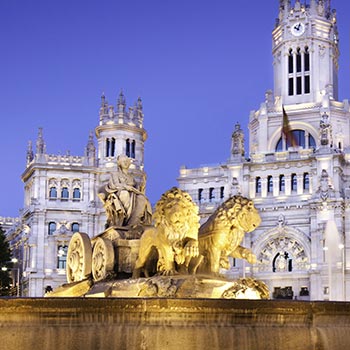Cervantes and His World: Exemplary Novels
Engineering & Social Sciences Program
Madrid, Spain
Dates: 1/18/24 - 6/5/24

Cervantes and His World: Exemplary Novels
OVERVIEW
CEA CAPA Partner Institution: Universidad Carlos III de Madrid
Location: Madrid, Spain
Primary Subject Area: Spanish Language & Literature
Instruction in: English
Course Code: 1613/778
Transcript Source: Partner Institution
Course Details: Level 300
Recommended Semester Credits: 3
Contact Hours: 42
DESCRIPTION
What do the Exemplary Novels mean or represent today? Twenty first-century readers might find the volume just entertaining, or weird, but a close reading of this collection of short stories illuminates the depth of an experimental literary process that opens a window to Cervantes´ preoccupations and participation with his fictional works in some of the most hotly social debates of his time. This course explores literary representations of social, political and religious issues in Cervantes´ Exemplary Novels. We will look at this collection of short stories to analyze the relationship between literary fiction and its historic and cultural determinations. Also this approach will allow us to reflect on topics from Cervantes´ time that are still relevant in debates in contemporary Spain.
In 1613 Cervantes publishes in Spain the Exemplary Novels. The volume is a collection of twelve brilliant and sophisticated short stories that comes out a few years after Cervantes´ suddenly acquired fame. In his book the author of Don Quixote explores literary techniques and displays a myriad of topics and characters from his contemporary life: crime in cities, poverty, prostitution and public health, government corruption, gypsy communities, pirates and delinquency on the sea, religious tensions, madness and social alienation, etc.
Cervantes lives and writes during one of the richest and most remarkable periods of Spanish literature, but also under the decline of the Spanish Empire. The author of Don Quixote explores some of the main problems that affect a society that lives and struggles to survive under the monarchy of the Habsburg. The city is a common scenario in his stories: Madrid, Valladolid, Salamanca, and specially Seville and the Andalusia region where Cervantes spent a great amount of time.
BEYOND THE TEXTS¿
A list of visits and activities in Madrid and surrounding areas are suggested: from museums to convents, churches, synagogues, mosques, temporary exhibits, libraries, palaces or cultural institutions. This way students could learn about Cervantes´ time not only from his literary works but also from paintings and other fine arts, civil and religious architecture, manuscripts, theater and music.
In 1613 Cervantes publishes in Spain the Exemplary Novels. The volume is a collection of twelve brilliant and sophisticated short stories that comes out a few years after Cervantes´ suddenly acquired fame. In his book the author of Don Quixote explores literary techniques and displays a myriad of topics and characters from his contemporary life: crime in cities, poverty, prostitution and public health, government corruption, gypsy communities, pirates and delinquency on the sea, religious tensions, madness and social alienation, etc.
Cervantes lives and writes during one of the richest and most remarkable periods of Spanish literature, but also under the decline of the Spanish Empire. The author of Don Quixote explores some of the main problems that affect a society that lives and struggles to survive under the monarchy of the Habsburg. The city is a common scenario in his stories: Madrid, Valladolid, Salamanca, and specially Seville and the Andalusia region where Cervantes spent a great amount of time.
BEYOND THE TEXTS¿
A list of visits and activities in Madrid and surrounding areas are suggested: from museums to convents, churches, synagogues, mosques, temporary exhibits, libraries, palaces or cultural institutions. This way students could learn about Cervantes´ time not only from his literary works but also from paintings and other fine arts, civil and religious architecture, manuscripts, theater and music.







